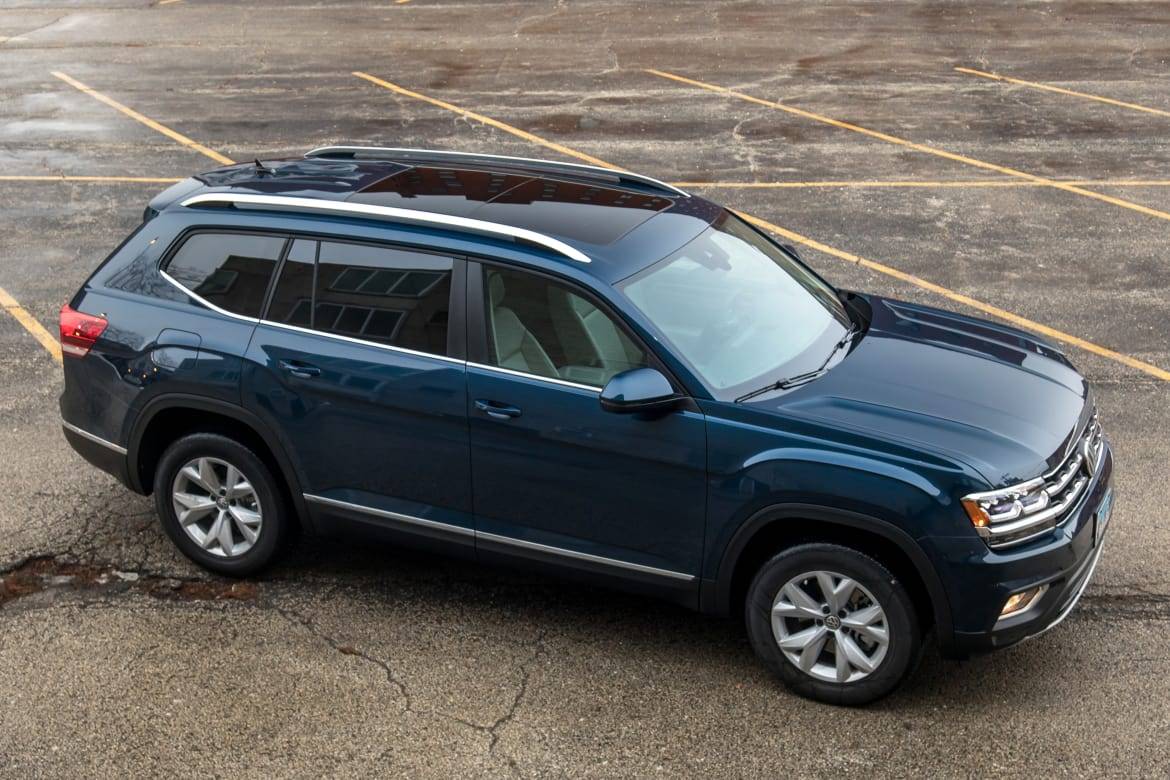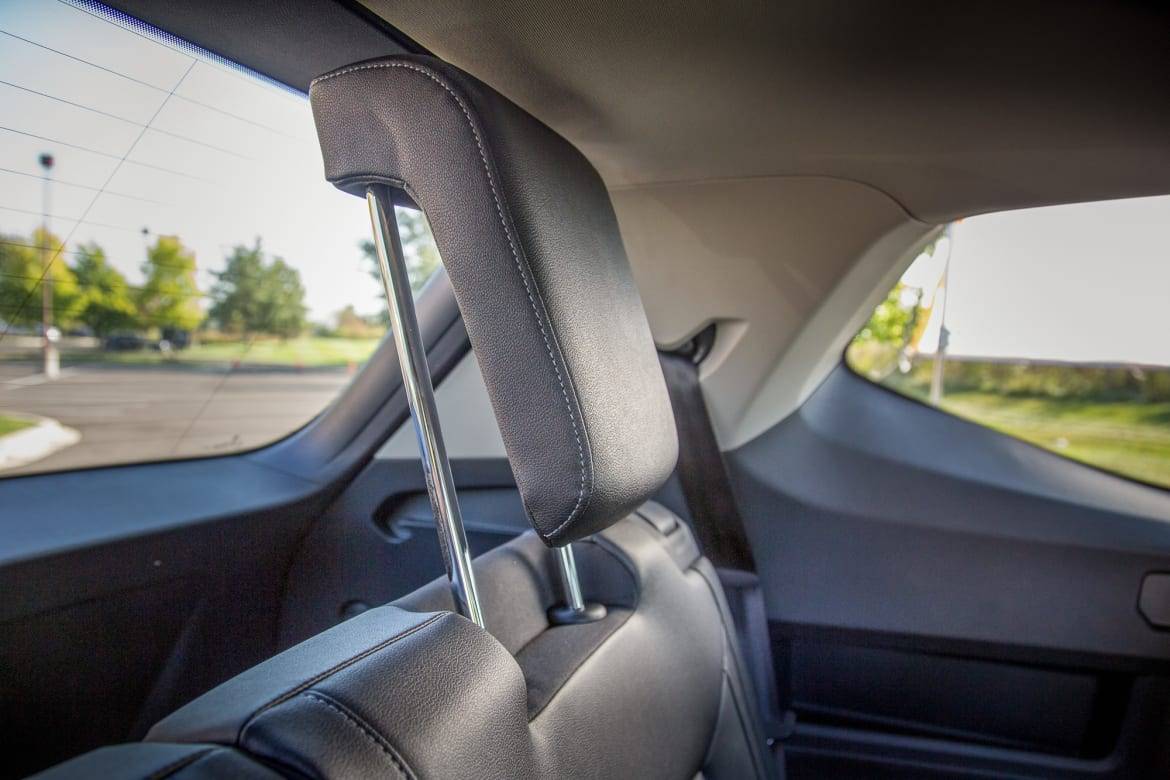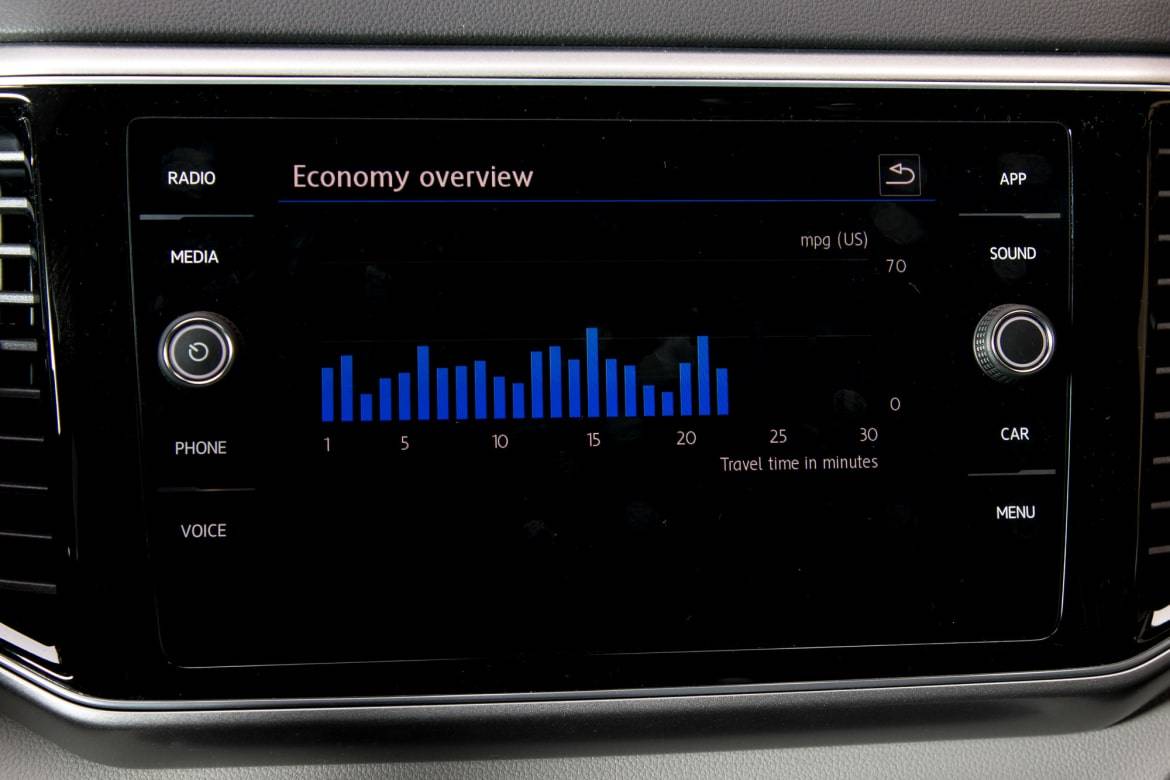Atlas Bugged: 5 Annoying Things About Our Long-Term VW SUV


There’s a lot of love for the 2018 Volkswagen Atlas at Cars.com. We named it our Best of 2018 earlier this year, and before that, the SUV finished first — by a wide margin — in a comparison of three-row SUVs. We bought an Atlas SEL all-wheel drive V-6 to test for 12 months, and the closer look afforded by months of testing has produced a list of things that we like about the three-row SUV — but also a list of things that annoy us. Here’s what’s been sticking in our collective craws after living with the big VW day in and day out since January.
Related: Hate Stopping for Gas? The 2018 Volkswagen Atlas Isn’t for You
Get 2018 Volkswagen Atlas DetailsFind a 2018 Volkswagen Atlas Near You

Interior Quality
It wasn’t that long ago when a Volkswagen car’s cabin materials, with their near-luxury quality levels, stood out among mainstream vehicle brands. But cost-cutting has brought current VW vehicle interiors more in line with the competition, and the loss of that premium feel hasn’t sat well with some editors. “[The interior] works great, it’s spacious, it’s comfortable … but it just looks and feels cheap and hollow,” said Detroit Bureau Chief Aaron Bragman. It’s not just a matter of aesthetics, either: The hard-plastic trim where the center console meets the dashboard is an uncomfortable resting place for the driver’s right knee.
Gas Mileage and Driving Range
One of the few areas where the Atlas came up short in the comparison test it won was estimated gas mileage for the available V-6 (a turbo four-cylinder engine is standard, though it only pairs with front-wheel drive). Our all-wheel-drive V-6 Atlas gets an EPA-estimated 17/23/19 mpg city/highway/combined, and in the 6,000-plus miles we’ve driven it, our average fuel economy stands at 18.7 mpg. We’ve been making frequent gas station stops, too.
“It still annoys me that Volkswagen’s V-6 model trails many three-row peers in gas mileage — by the EPA rating and definitely in the real world — but it doesn’t pay me back with more zip,” said D.C. Bureau Chief Fred Meier. “To add insult to that, the engine also sounds a bit coarser than others when pushed.”
“Though it supposedly has an 18.6-gallon tank, the refuel light soon starts barking at me at about 300 miles on a tank and I refill about 14-15 gallons,” said Managing Editor Joe Bruzek. “Perhaps I need to drain this sucker to see how far it really can go on a tank of fuel — or perhaps VW, knowing how bad its fuel economy would be, should have installed a larger tank. Maybe it’s time for some Mad Max auxiliary tanks strapped to the roof.”

Third-Row Head Restraints
The Atlas’ third-row seat is one of the roomier ones in its class with enough space to comfortably carry adults, but it’s the head restraints, of all things, that drag it down. “It’s really annoying that VW put those big, poorly designed clamshell head restraints in the otherwise reasonably accommodating third row, Meier said. “They push your head too far forward and, depending on your height, the lower edge can poke you in the back.”
Parking Sensor Sensitivity
From automatic emergency braking to lane departure warning to a 360-degree camera system, the Atlas SUV offers many of Volkswagen’s advanced safety features. It’s impressive technology, but we took issue with how quick the available front and rear parking intervene. “The sensors will go off in bumper-to-bumper traffic, parking or just in daily driving when you still have plenty of room in front or on the side,” said Melissa Klauda, assistant managing editor, video. “What’s even more annoying is when the prompt pops up, it turns down the music and doesn’t disappear until you physically ‘X’ it out on the touchscreen.
“I’m all for being safe and I appreciate the car’s capabilities, but it makes me question the accuracy of the sensors and system in general when it can’t be trusted to actually analyze its surroundings,” Klauda said. You can configure the parking sensor system so that it doesn’t automatically engage when driving, but that’s a poor solution to the problem.

Touch-Sensitive Stereo Controls
We’ve discussed the highs and lows of the Atlas’ multimedia system in another article, but one of the system’s flaws is significant enough to mention here, too. It’s not the system’s screen — which has crisp graphics that look great — or the thoughtful inclusion of volume and tuning knobs, but rather the SUV’s touch-sensitive controls near those knobs.
What’s the big deal? In short, it’s all too easy to brush against the touch-sensitive controls when adjusting the volume, for instance, and end up on one of the touchscreen’s other menus. And as we’ve experienced with other systems that rely on touch-sensitive pads, when you’re wearing ordinary gloves, they’re difficult to use.
Cars.com’s Editorial department is your source for automotive news and reviews. In line with Cars.com’s long-standing ethics policy, editors and reviewers don’t accept gifts or free trips from automakers. The Editorial department is independent of Cars.com’s advertising, sales and sponsored content departments.

Mike Hanley has more than 20 years of experience reporting on the auto industry. His primary focus is new vehicles, and he's currently a Senior Road Test Editor overseeing expert car reviews and comparison tests. He previously managed Editorial content in the Cars.com Research section.
Featured stories




